 |
 |
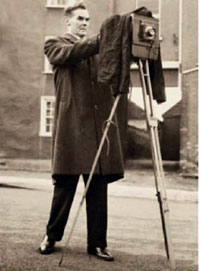
|
All of the photographers and firms on this page are listed alphabetically by surname.
Click here if you wish to look back to a list without descriptions Alphabetical list of photographers and firms Directory references are included where possible, and are by initials:
|
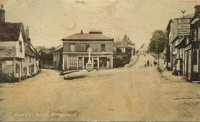 |
ALDRICH BRYANT & CO Aldrich Bryant and Co Botesdale is the publisher's name on the rverse of this card. It shows the marketplace in Botesdale and the presence of the war memorial places it as after 1921. It shows J Harvey's garage and the Greyhound inn.
THOMAS ABEL
Directory entries:- |
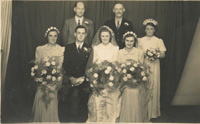 |
ALAN ARTHUR
Alan Arthur's address was 21 Hatter Street, Bury St Edmunds. He is known from this wedding photograph, probably from the 1920s. The reverse has rubber stamp, 'Alan Arthur 21 Hatter St Bury St Edmunds.' |
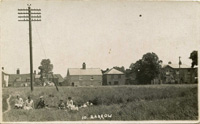 |
He also took some charming views of Bury St Edmunds and the surrounding villages, as this card of Barrow shows. Topographic card numbers recorded to date are between 1 and 33, but no less than three cards numbered 10 are known – including that of Barrow illustrated here. (The others numbered 10 are Dalham and The Hall at Whepstead.)
The cards depict Bury St Edmunds tourist views as well as rural views, including several of individual properties in villages. Further information on Alan Arthur was sent to me by Adrian Gray, on 11th December, 2022. His notes now follow:- "I can add a little to your notes on Alan Arthur, though I'm not sure how helpful they will be as not a lot of it has evidence to support it. He must have been a prolific producer of postcards as I have several in my collection from the Sampfords (over the Essex border, past Haverhill towards Saffron Walden), and he also employed photographers. I have a box of glass plate negatives of photos of Hempstead, Essex that I bought off ebay & was told by the vendor that they had been in his house when he bought it in the 1970s from a lady who had toured the area on a motorcycle taking photos for Alan Arthur. I rather think I have a photo of the motorbike, as the same bike turns up in the distance in several of the photos, and there's one where it is parked outside a beer house!"
"Looking through my cards, he seems also to have worked from 4 Hatter Street and, at some point, possibly also Finchingfield in Essex - though I've not been able to track him down in any directories as being in Finchingfield, I wonder whether he might have had someone there selling his cards for him?" |
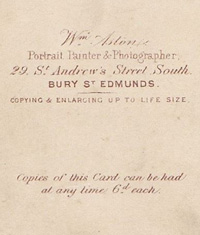 |
WILLIAM ASTON William Aston was based at 29 St Andrews Street, before moving to 83 St Johns Street now the home of the shop called Sunrise. On 12th November, 2022, I received an email from Trevor Payne which contained the following research into Aston's business and life:- A branch opened at 7 Market Hill on the 5th September 1893 (Bury and Norwich Post). However, William Aston suffered ill health, and his mother Emily had to step in. Emily Aston ran a fancy drapers in St Johns Street and her son William, aged 20 was a photographer (1891 census). He died in 1893. Mrs Aston let her studio to W. Boughton in consequence of the continued ill health of her son William. (BFP 2/12/1893) William Aston died later in 1893.
Directory entries:-
83 St John Street, Bury
|
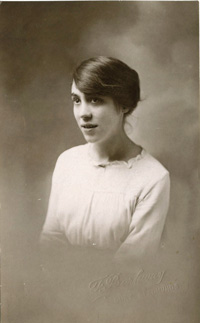 |
FREDERICK M BARKWAY Not a lot is known about Frederick Barkway. His pictures bear an embossed autograph in the bottom right hand corner, which can be easily overlooked. Please click on the portrait to view the embossed signature.
Directory entries:-
JOHN JAMES BAXTER
Directory entries:-
|
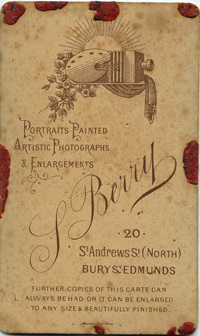 |
MISS SUSANNA BERRY Described in KS1888 as ‘photographic colourist’, whilst at Sudbury. By 1892 she was working at 20 St Andrews Street North, in Bury St Edmunds, and offering portrait painting as well as artistic photographs and enlargements to any size. The CDV illustrated is of a young boy dressed in "Sunday best". Directory entries:-
78 Cross Street, Sudbury
Melford Road, Sudbury
20 St Andrew's Street North, Bury
|
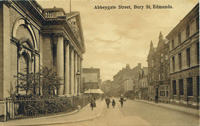 |
BOOTS CASH CHEMIST Boot's Cash Chemists and Perfumers came to Bury in 1910 with a mock Tudor building on the Cornhill of a type they built all over the country. However, Boots always tried to give each one a local flavour. Its statues included St Edmund, for obvious reasons, King Edward I, for his parliaments here, Edward VI, for his Grammar School, King Canute, for founding the abbey, and Agricola, for crushing Boudicca. This view of Abbeygate Street, was one of a number of town views published by Boots as "The Pelham Series", and was posted in May, 1916.
|
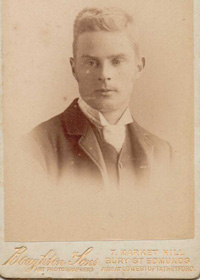 |
W BOUGHTON AND SONS, in Bury 1893-1896 Boughtons are another photographers business hitherto known only from a few surviving CDVs. Their address was at 7 Market Hill, with other offices in Lowestoft and Thetford. However, on 12th November, 2022, I received an email from Trevor Payne which contained the following research into Boughton's business and life:- In 1893 Boughton bought the photographic business at 7, Market Hill from Mrs Aston, whose son William had been unwell and died in 1893. Walter James Boughton married Frances Sarah A Jex at Norwich in 1893. On the church register for St. Margaret’s, Norwich, he married on the 9th November 1893 and gave his occupation as photographer, and his address was Market Hill, Bury St. Edmunds. He must have set up there before moving on to Ipswich where he is living in 1901. The Bury Free Press reported on the 26 May 1894 that Boughton’s had moved from 7 Market Hill to new more commodious premises at (35?) Brentgovel Street.(BFP 26/5/1894) On the 14th December 1895 in the BFP, Messrs W. Boughton & Sons, advertised carte de visites at 7/6d per dozen or 4/6d per half dozen and cabinet cards at 8/6d per half dozen or 14 shillings per dozen. Only very few Boughton photos have Bury St. Edmunds on them. The business was bought by Mr. George Cousins when he moved to Bury St. Edmunds in 1895 who is listed in Kelly’s Suffolk 1896 at 35 Brentgovel Street.
|
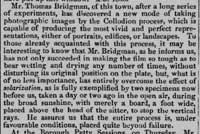 |
THOMAS COOPER BRIDGMAN fl 1851-1859 T C Bridgman does not feature in the usual histories of photography. He was a chemist, and experimented with photography, but no trace of his work remains today. He is probably forgotten because he died soon after making his discoveries. In the history of Bury St Edmunds he should be remembered most for his invention of a corn screen which Robert Boby turned into a commercial success story. In the 1851 census, Thomas Cooper Bridgman and his family were living at 25 Northgate Street. He was recorded as aged 44, born at Clare, and given the occupation of Chemist. Thomas Cooper Bridgman was born in Clare in 1806, and was baptised on 11th September, the son of Ann and Thomas Bridgman. He would die, aged only 53 in Bury St Edmunds in 1859, and was buried on 8th June at the cemetery. In 1853 at Bury, Thomas Bridgman invented a new way of using the collodion photographic process, as reported in the Bury and Norwich Post of 1st June, 1853.
|
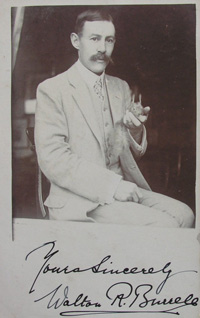 |
WALTON ROBERT BURRELL Walton Burrell, of Hall Farm, Fornham St Martin, learnt his photography from John Palmer Clarke in 1881. This remained as one of his many hobbies until 1896, when he decided to make photography his main source of income. (Up to 1896 he had been a postal stamp dealer.) By 1905 he was producing postcards for the Euston Estate, with a variety of topographic views. His main importance came in the Great War when he immediately began to visit the many army encampments in the area and produce postcards for sale to the soldiers to send home with news. He also took pictures in the military hospitals wherever he could gain admittance and also recorded the area where tanks were first tested in the Elveden Estate.
The CDV shown here probably dates from around 1912.
|
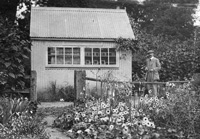 |
He never had a studio, as such, or any business premises, always producing his work from a shed in the garden. Because many of the casualties in the military hospitals were from Australia, South Africa, and Canada with some Belgians and even a German or two, Burrell’s wartime picture postcards can turn up almost anywhere in the world. He never appeared in any Directory and is not included in conventional photographic histories. However, in my opinion, W R Burrell is the most important local photographer in the period 1910 - 1925.
|
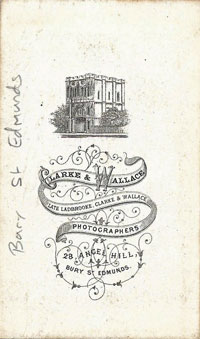 |
JOHN WILLIAM CLARKE fl ??-1888? d1893
After the demise of LADBROOKE, CLARKE AND WALLACE, in 1866, a new partnership of CLARKE AND WALLACE was established until 1867 at 28 Angel Hill, Bury St Edmunds. The partnership was still functioning on 18th July 1867. By 3rd December, 1867, however, Clarke was operating under just his own name at 28 Angel Hill, but was identifying his business in a sub-heading as 'Late Clarke and Wallace'.
JWC continued in the premises at 28 Angel Hill formerly the business of Clarke and Wallace. J W Clarke variously produced work at two Angel Hill addresses, (7 and 28), two Abbeygate Street addresses, (31 and 41), in Whiting Street and at 3, Meat Market. |
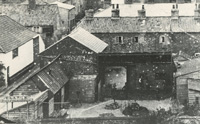 |
A CDV from, probably, the 1880s gives the address ‘7 Abbey Hill, opposite Abbey Gate’. Jarman says that the firm also had premises in King's Road, Bury. These are shown in a photograph dating from the early 1870s, where a yard formed an open-air studio for equestrian pictures. A sale notice in the 'Bury and Norwich Post', 1st December 1874, announcing the auction of a 'garden, stable and photographic studio of Mr J W Clarke' in Cemetery Road. (Cemetery Road was actually renamed King's Road, so it seems likely that Jarman has inadvertently used the later road name.) In addition to their work as portrait photographers, the Clarkes were very active in the field of topographical photography, and their views contribute significantly to the surviving record of the Bury area. Clarke's obituary in ‘The Bury & Norwich Post’, 21st February 1893, reports that he died in Ipswich on 14th February, aged 70, having retired (initially to Felixstowe) ‘a few years ago’. During his career he photographed the Prince of Wales and ‘many other illustrious personages’. ‘Although life-long a staunch Conservative, he took no active part in politics, or in public life, but in private life his geniality made him numerous friends.’ |
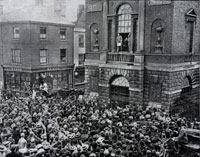 |
JOHN PALMER CLARKE - 1903 This photograph was published in the Sketch periodical of July 31st, 1895. It is a fine photograph by J Palmer Clarke, a Bury photographer, who had his studio at 7, Angel Hill, also moving to 31 Abbeygate Street. He also had a studio situated in Post Office Terrace, Cambridge, which was in business from the 1890s to the 1930s. For a few years he worked in both Bury and Cambridge. In 1903 he would move permanently to Cambridge, leaving his Bury negative stock to H I Jarman. John Palmer Clarke was the son of John William Clarke, who started the photographic business in Kings Road, Bury St Edmunds at least by 1875. When he married Mary Emma Taylor at Drinkstone, on 3rd October 1889, the service was conducted not by the incumbent, but by the groom's brother, Arthur Edward Clarke, who was the curate of Sawley, in Derbyshire. Clarke was present at the Photographic Convention of the United Kingdom, 1897. (In 1881 he taught the basics of photography to 18 year old Walton Robert Burrell, a profoundly deaf farmer’s son from Hall Farm, Fornham St Martin. Burrell would become important during the Great War for his phoographs of soldiers at camp and also wounded in hospital.)
Directory entries as follows:-
31 Abbeygate Street, Bury
Angel Hill, Bury
WILLIAM COLLINGS Mentioned in a 'Bury and Norwich Post' court report, 13th May 1862. He was a photographer of Brentgovel Street, Bury St Edmunds, employed by George Fenton, and was charged with assaulting a fellow-photographer, William Matthews, in an altercation over damage to a borrowed lens. ('He seized me by the collar, and, with his fist bent, threatened to send my teeth down my throat.')
|
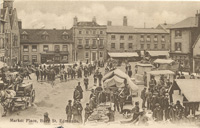 |
COOK AND SON The reverse of this card bears the legend, 'Published by Cook and Son, Fine Art Dealers, etc, 10, Cornhill, and 1 & 2, Ipswich Street, Bury St Edmunds, and Hyde Park Corner, Ipswich.' 'Printed in England.' This card was posted on July 28th, 1914. Cook and Son are known for a series of sepia postcard views on a thick card produced from 1910 into the WW1 period, but also from around the middle of WW1 produced some views as real photographic postcards.
|
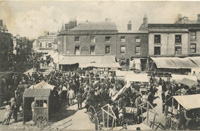 |
H A CORNISH
Mr Cornish had a shop at the top of St Johns Street selling newspapers, postcards, sweets and the usual newsagents fare. He published postcards, but we do not yet know the photographers. His strapline is in the bottom left hand corner of the view of the Cornhill on market day. Although this card was posted in 1906, an identical card was posted in 1920.
|
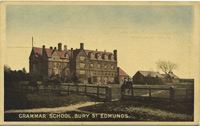 |
H A Cornish also published cards of Hardwick House, one found posted 1908, with his strapline on the reverse. In addition it was Cornish who sold cards of the chapels and churches in the town including a small portrait of the pastor in charge.
The picture of the Grammar School is labelled on the reverse,"F. & K. Cornish, 26 & 28 St. John's Street, Bury St Edmunds."
|
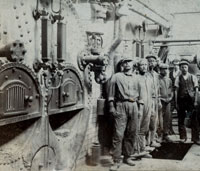 Bury St Edmunds |
GEORGE S COUSINS George Cousins came to Bury St Edmunds in 1895,when he took over the photographic business of W. Boughton & Sons, at 35 Brentgovel Street. Three years later he moved to 30 The Butter Market. (BFP 10/5/1830). Cousins produced many of the photographs for Pawsey's "West Suffolk Illustrated" of 1907. The Lancashire boilers at the Bury St Edmunds electricity generating station were made by Crothers Limited of Sheffield, one of which is shown here in a photograph by G S Cousins, dated most probably to 1910. (The dating is unclear and could be 1916, but I doubt it.) George Sebastian Cousins was the main photographer of the Bury Pageant of 1907, with premises at 30 Buttermarket, Bury St Edmunds. He was commissioned by Langhorne, Pawsey & Co to produce a series of 49 postcards of various scenes from the Pageant, and Pawseys would sell these in packets of seven cards each. Cousins actually published some individual pageant pictures as postcards himself. In 1915 the premises of George Cousins was one of several businesses in the Buttermarket burnt out by incendiary bombs dropped by a Zeppelin airship.
Directory entries:-
|
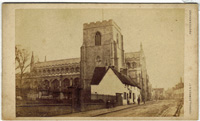 |
JOSEPH CUNDALL Joseph Cundall was born in Ipswich, a printer by trade and later a publisher & photographer, Cundall was (according to Dimond & Taylor) a founder member of the Photographic Society of London, and an arranger of exhibitions and promoter of other photographers. In 1852 he established the Photographic Institution in London, from where he seems to have set up partnerships with local photographers. One of which was CUNDALL, DOWNES AND CO. at 49 Abbeygate Street, in Bury St Edmunds. This scan of a CDV from the 1860s shows St Mary's Church and cottages, and is kindly supplied by Gerald Brown. An advertisement in the 'Bury and Norwich Post', 3rd December 1867 - mentions their Diamond Cameo Portraits (a briefly popular format, for which a licence had to be purchased) and their 'Clergy Portrait Series, which is now assuming a very complete form'. Joseph Cundall died in 1895.
Directory entries:-
HENRY DEAN
Just one directory entry
|
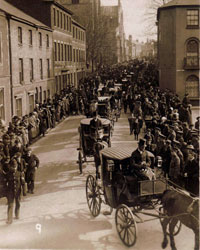 |
FREDERICK WILLIAM DREW
Drew styled his business grandly as "Drew's Imperial Studios", trading from 26 Cornhill. He produced a series of cards of the funerals of the victims of the Zeppelin raid on Bury St Edmunds on 31st March, 1916. |
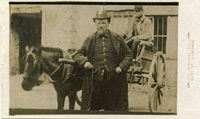 |
Drew also photographed many soldiers in his studio on Cornhill, as well as the usual portraits of local people. This picture of a carrier was obviously taken out of doors and is dated on the back 10th December, 1917. There are a few pictures in existence of carriers photographed in the yard of the Star Inn in Eastgate Street, but these are unattributed at present. (The Star inn closed in 1923 and was demolished in 1926.)
Only one Directory entry:-
|
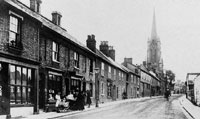 |
JOHN IRVING FARRINGDON
John Farringdon was first recorded as living in Bury in 1911. His shop was in 4 Lower Baxter Street, but he removed to St Johns Street, which he advertised by this card showing his shop. From 1911 to 1914 he published a series of postcards of Suffolk, recording the last of life before the Great War. |
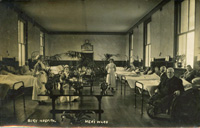 Bury St Edmunds |
The second card is of the Men's Ward in the hospital, and shows his ability to take good photographs indoors.
Directory entries:-
|
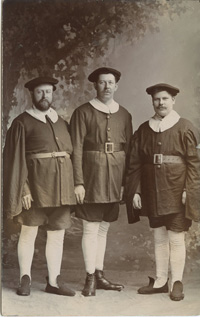 |
JOHN H GILL John Gill had worked with William Silas Spanton for many years before he set up on his own at 40 Church Terrace in Bury. An advertisement in the 'Bury and Norwich Post', 5th September 1893, refers to Gill's recent opening of a new studio at 77 Whiting Street. The advertisement also reveals that Gill was 'For many years with Mr W S Spanton'. Several Gill postcards survive showing individual actors in the 1907 pageant in their pageant costumes.
Directory entries:-
77 Whiting Street, Bury
Whiting Street, Bury
|
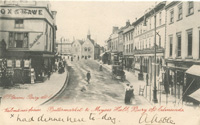 |
F T GROOM
Grooms was a general bookseller and stationers. However the front bears the legend, 'Valentine's Series'. Valentines were a national publisher of postcards which included cards of Bury St Edmunds, and usually these cards carry only the Valentine's logo. Groom's presumably had an arrangement with Valentines to allow their own name to be on the card. This card was posted in 1903. |
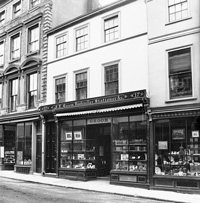 Bury St Edmunds |
Groom's bookshop was a feature of Abbeygate Street until the 1960s. Note that the shop was next door to Spanton's Photographic Emporium.
|
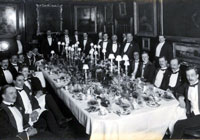 |
HARRY ISAAC JARMAN On 26th January, 1914, the Mayor, George Gery Milner-Gibson Cullum, hosted a complimentary dinner to the 5th and 6th Battalions of the Suffolk Regiment at his home at Hardwick House. This superb presentation photograph was captured by Harry Jarman. At least four of the officers shown died in the Great War. In 1890 Harry Isaac Jarman joined the firm of John Palmer Clarke as an apprentice photographer. He remained with Clarke until the pportunity given by the retirement of W S Spanton in 1901. In 1901 the William Spanton stock of negatives and the premises at 16 Abbeygate Street were bought by Jarman. The Spanton-Jarman Collection at the Bury Branch of the Suffolk Record Office is the result of Harry Jarman's preservation of the area's photographic record. H.I. Jarman died in 1961. Before his death the business had been conducted by his son Oswald G. Jarman who retired in 1977 and died in 1993.
Directory entries:-
High Street, Newmarket
|
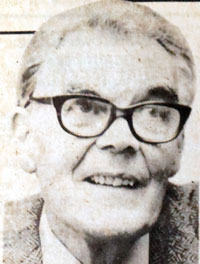 |
OSWALD G JARMAN Harry I. Jarman died in 1961. Before his death the business was continued by Harry's son, Oswald Jarman, who was a member of the Past & Present Society and served on the committee for many years. By 1966 Oswald Jarman, Photographer, was registered at 20 Hatter Street. On his retirement in 1975 a large number of the early glass negatives were deposited with the Suffolk record office, and have remained stored in environmentally controlled conditions in the Bury St Edmunds branch to this day. The collection consists of 4000 negatives, and includes the work of Harry and Oswald Jarman, along with photographs taken be William Spanton and his son W S Spanton, and those purchased from John Palmer Clarke. They give a fascinating glimpse into life in Bury St Edmunds and a number of smaller towns and villages across the county from 1860s to the outbreak of WW2. Oswald Jarman died in 1993. In 1997 Oswald Jarman’s son Michael donated the Jarman firm’s collection of old negatives to the Bury St Edmunds Past and Present Society, with a request that members do all they could to preserve it as a unique source of local history and make it widely available to the public.
The Society successfully bid for lottery funding to clean and repackage the collection, and began a programme to digitise and publish the images online.) You can see this collection here:
|
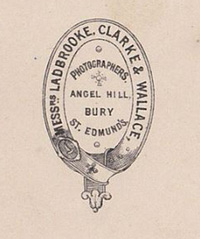 |
LADBROOKE fl??-1866 The photographer Ladbrooke is unknown to history at this moment, except for the fact this name occurs on CDVs under the names LADBROOKE AND WALLACE and LADBROOKE, CLARKE and WALLACE. Both of these firms predate the longstanding photographic firms of J W CLARKE and his son JOHN PALMER CLARKE.
|
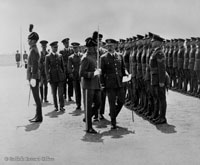 |
GERALD LAMBERT worked 1930-1958 The photographer Gerald Lambert is a comparatively modern figure who photographed many civic events as well as the usual weddings and family portraits. Mr Lambert set up his studio on the corner of Short Brackland and Well Street in Bury St. Edmunds in 1937. After his return from war service in the Royal Air Force, he restarted the business in 1947 and continued until he retired in 1958. In October, 1934 he photographed aeroplanes and pilots who took part in the Mildenhall Air Race. On Saturday, 6th July, 1935, King George V, Chief of the Royal Air Force, arrived by car for the first ever Review of the RAF since its creation as a separate entity in 1918. Thirty eight squadrons attended with 356 aircraft. The roads around the town were packed, with 26,000 visitors arriving at the base. This photograph by Mr Gerald Lambert, a professional photographer based in Bury St Edmunds, shows King George, and his sons, the Prince of Wales and the Duke of York, inspecting the Guard of Honour. Many of the photographs are in the form of glass negatives and are deposited at the Suffolk Record Office in Bury St Edmunds, under reference K564.
|
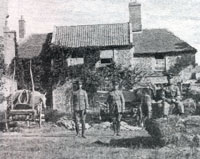 |
LONNONS OF IXWORTH For 15 days in August, 1914, the Gloucester Hussars had an encampment behind The Beeches, in the High Street at Ixworth. Mr Lonnon, a chemist and photographer in Ixworth, quickly photographed the camp and sold the pictures, as postcards, to the troops.
WILLIAM MATTHEWS Matthews was on the receiving end of the ire of William Collings in 1862. Mentioned in a 'Bury and Norwich Post' court report, 13th May 1862. He complained of being assaulted by a fellow-photographer, William Collings, in an altercation over damage to a borrowed lens. ('He seized me by the collar, and, with his fist bent, threatened to send my teeth down my throat.')
He may be the same Matthews who was a photographer at St Andrews Gardens in Bury in 1855.
Directory entries:-
45 Churchgate Street, Bury
|
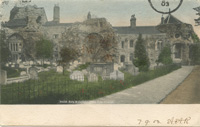 |
PAUL AND MATHEW Paul and Mathew had a shop at 53 St Johns Street that continued to trade into the late 20th century. They had published postcards in the old format, quickly changing over to the split back form in 1903. Both styles were in use in after 1902 for a few years. This card was posted in September, 1903, and on the back it reads, "Paul and Mathew's Series". On the front it reads, "4/228 Bury St Edmunds Abbey Ruins. F.F. & CS." (Maybe C2 or Co). Possibly this is a Francis Frith card printed by Paul and Mathew.
|
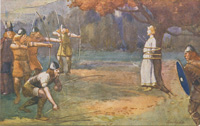 |
FREDERICK G PAWSEY Frederick Pawsey traded as Langhorne, Pawsey and Co. and began publishing postcards in 1903. Pawsey was born in Bury in 1870, and took over his printer's and stationer's business at the early age of 15 years old. He died in 1953, but the Pawsey business lasted in Hatter Street until 1991. Pawsey would really make his mark in 1907, when he published a major photographic work on West Suffolk. These pictures were also published as postcards. Pawsey took some of these photographs himself, but engaged George Cousins to travel round and collect the majority. The success of 'West Suffolk' published as a part work, led to another volume on East Suffolk. Bury held a great pageant in 1907. Not only did F G Pawsey and Co publish Rose Mead's illustrations as twelve colour postcards, but they also printed an astonishing set of 49 postcards from photographs taken of the Pageant by George Cousins. Two other publishers of postcards, Fred Watson and J. H. Gill, produced cards depicting individuals and groups posing in their costumes.
CHARLES SCRIVENER
It seems likely that Charles Scrivener was a close relation of Frederick Scrivener as they shared addresses at 13 Well Street.
Just one directory entry
FREDERICK SCRIVENER
Directory entries:-
13 Well Street, Bury
Cutler Street, Ipswich
18½ Norwich Road, Ipswich
11 Well Street, Bury
Well Street, Bury
94 St John Street, Bury
7 Norwich Road, Ipswich
|
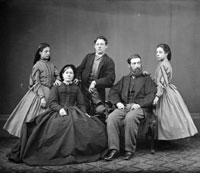 |
WILLIAM SPANTON 1863-1870 In 1863 or 1864 William Spanton established his "Repository of Arts and West Suffolk Photographic Establishment" at 16 Abbeygate Street in Bury St Edmunds. At first he ran a variety of enterprises from these premises, combining the photographic side with work as a house decorator, paper-hanger, plumber, glazier, carver, gilder and painter.
This remarkable picture shows William Spanton, bearded, with his wife Sarah and family in about 1868/69. It illustrates the superb quality which could be achieved using the glass negatives and tripod cameras of the time, together with a long exposure. The younger man is William Silas Spanton with his sisters Sarah Rebecca and Hannah Kate. |
 |
Jarman relates that Spanton's ‘Repository of Arts & West Suffolk Photographic Establishment’, housed in a building of his own design in Abbeygate Street, was in operation by 1864. Versed in a variety of building and decorating trades, Spanton concentrated in the late 1860s on photography, framing and gilding. He died in 1870, aged 47. Directory entries :- KS1865, MS1868, KS1869
|
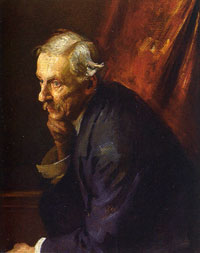 |
WILLIAM SILAS SPANTON 1870 - 1901 Spanton’s son, William Silas Spanton (1835-1940) took over when his father died in 1870. He continued at 16 Abbeygate Street, Bury. Jarman says that William Silas Spanton had to give up art training in London to take over the business on his father's death in 1870. He diversified into the sale of art materials and built up a practice as an optician. He was prominent in local affairs, and was involved in the conversion of Moyses Hall, Bury, to a museum.
He was a gifted artist, as this self portrait of around 1890 shows. |
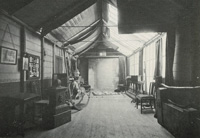 |
As a photographer, he resisted the introduction of electric light in his studio until his retirement in 1901. A photograph of his north-light studio, dating from about 1900, shows some up-to-date props, but also shows natural lighting arrangements that would have looked much the same 30 or so years before. In 1901 he retired and sold the business and its negatives to Harry Isaac Jarman. After retirement he wrote an autobiographical account of his youth, "An Art Student and his Teachers in the Sixties, with other Rigmaroles". He also wrote a book entitled " Old Masters and how to copy them." W.S. Spanton was at the centre of many local controversies. He took a leading part in the opposition to the Corporation's proposal in the 1890s to convert Moyses Hall into a fire station, and was Honorary Secretary of the Committee formed to repair the Hall for its opening as a museum. Spanton was active even in late retirement and his guidebook to the town, entitled "Bury St Edmunds Its History and Antiquities", contained many of his own trenchant views on the town's changes. It was published around the time of his death in 1930 at the age of 85.
Directory entries:-
|
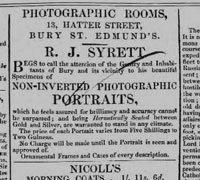 |
R J SYRETT 1853-1854 Syrett ran the Hatter Street studio in Bury from June 1853 until July 1854. A 'Bury and Norwich Post' advertisement of 1st June 1853 promotes his 'Non-Inverted Photographic Portraits', which are 'Hermetically Sealed between Gold and Silver'. He subsequently seems to have moved to form part of the Gilliam & Syrett partnership that had premises in London Road, Lowestoft, in July 1855.
Just one directory entry for Bury:-
|
 |
WALLACE The photographer Wallace is unknown to history at this moment, except for the fact this name occurs on CDVs under the names LADBROOKE AND WALLACE and LADBROOKE, CLARKE and WALLACE. Both of these firms predate the longstanding photographic firms of J W CLARKE and his son JOHN PALMER CLARKE.
|
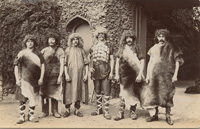 |
FREDERICK WATSON Fred Watson seems to have constantly been on the move, at least according to his directory entries. Fred Watson was another of the several photographers who produced cards depicting individuals and groups posing in their pageant costumes in 1907. Directory entries:-
49 Abbeygate Street, Bury
99 Northgate Street, Bury
Cemetery Road, Bury
35 Queen's Road, Bury
34 Abbeygate Street, Bury
34 Crown Street, Bury
W WHITLOCK
Just one directory entry
ARTHUR J WILKINS
Just one directory entry
|
These superb photographic websites :-
Suffolk's early photographers.org
Early photographers index
CDVs and photographers
Running in Suffolk's collection of Victorian photograhers
Information prepared by David Addy, 23rd April 2019
| Go to Photography Homepage | Last updated 13th December, 2022 | Go to Website Home Page |